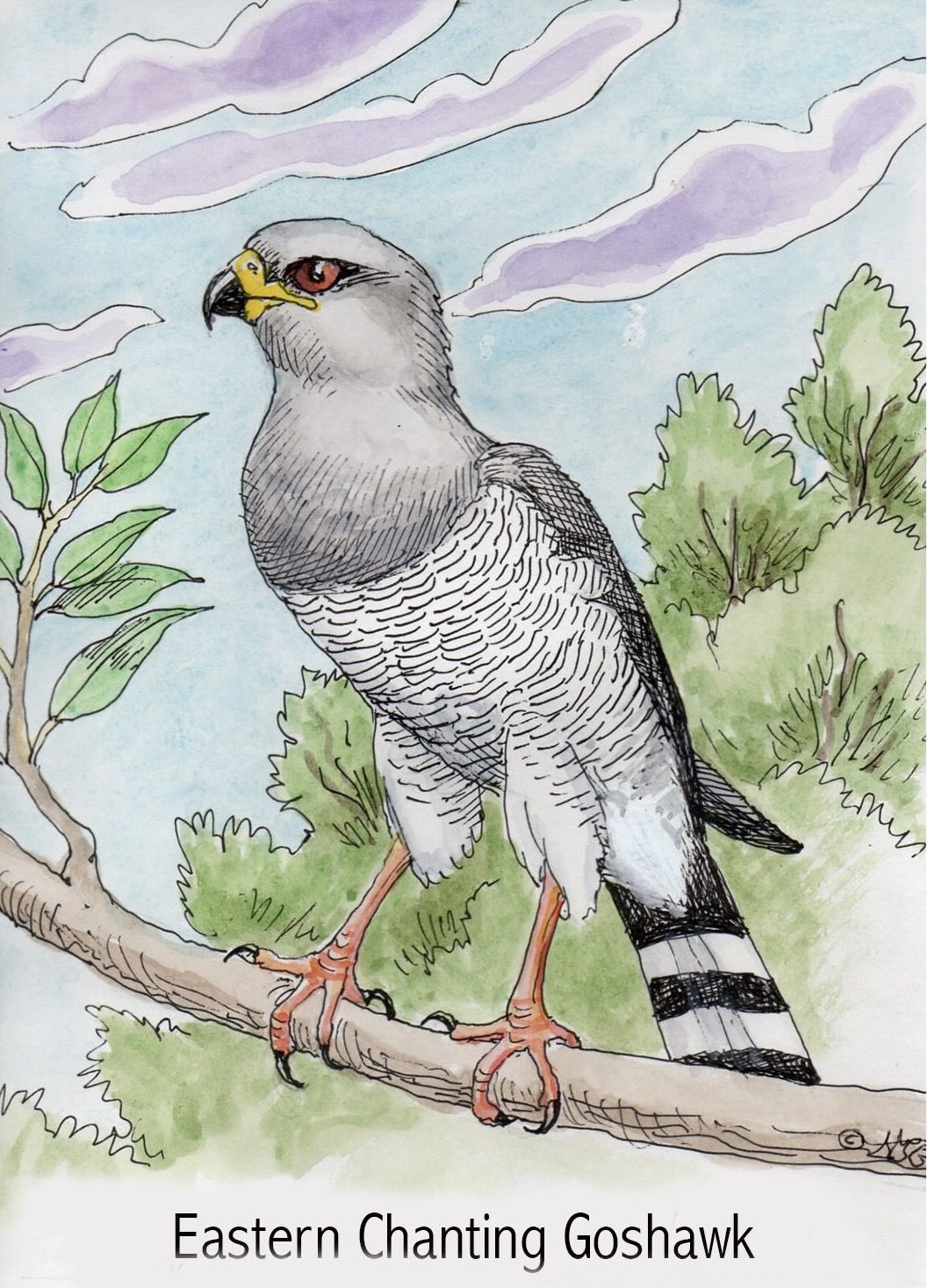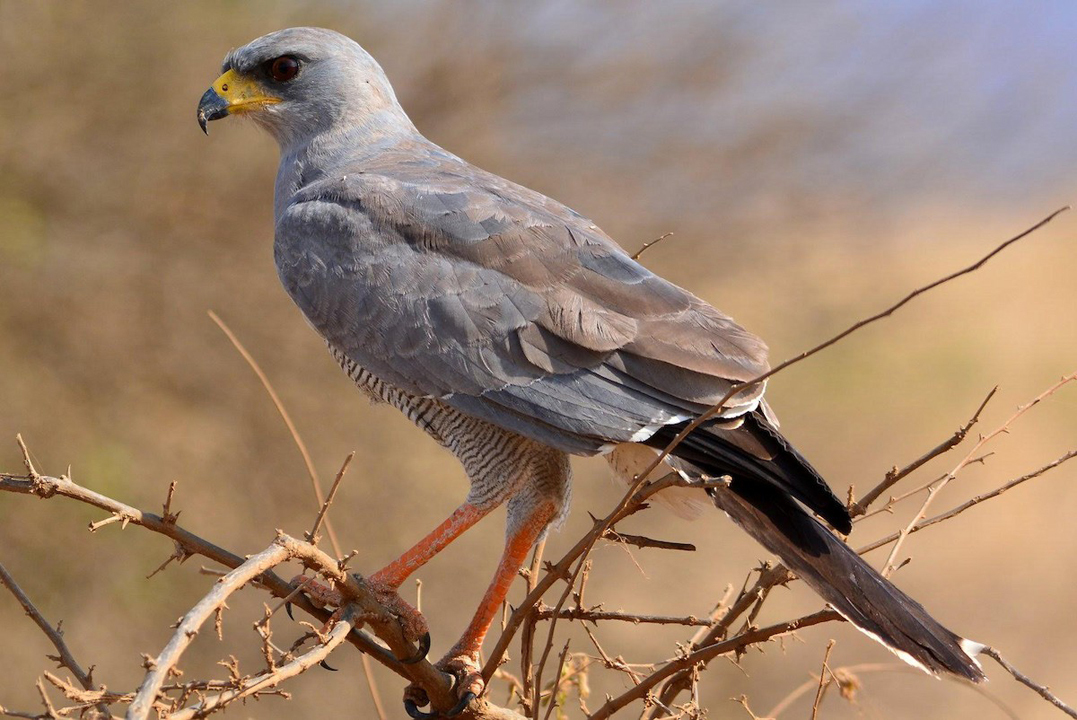Eastern Chanting-Goshawk
-
SCIENTIFIC NAME: Melierax poliopterus
-
SWAHILI NAME: Kizu-domo-njano
Chanting goshawks earned their name from the melodious calls they make during nesting.
Chanting goshawks earned their name from the melodious calls they make during nesting.

Bird
Diurnal
Carnivorous
515-800 g
45-55 cm
Wingspan: 95-110 cm

Male and female eastern chanting-goshawks have the same eye color. What is it?
Both sexes have dark red eyes, but females are larger than males.
Eastern chanting-goshawks are typically solitary and are often seen alone or in pairs sitting at the top of a tree or utility pole.
Some experts say calls can sound like a squeaking song; the calls vary during flight, when begging for food, or when alarmed.
These birds are known for quickly swooping from a high perch or in flight to catch their prey; they sometimes run after prey, but this is not typical.
Least concern
Favored prey includes lizards, snakes, small birds, rodents, and some insects.
After moonlit courtship flights, the pair builds a small stick nest that is protected by foliage. The female performs most of the egg incubation. Chicks fledge around 50 days after they hatch.
Eastern chanting-goshawks suffer when their habitat is overgrazed or destroyed by elephants.
Kenya populations are stable.
Eastern chanting-goshawks are common in Ethiopia, Uganda, Kenya, and Tanzania.
These birds are widespread in dry thorn woodland and savanna.
While eastern chanting-goshawks generally prefer high perches, they have also been seen perched on camel humps.
